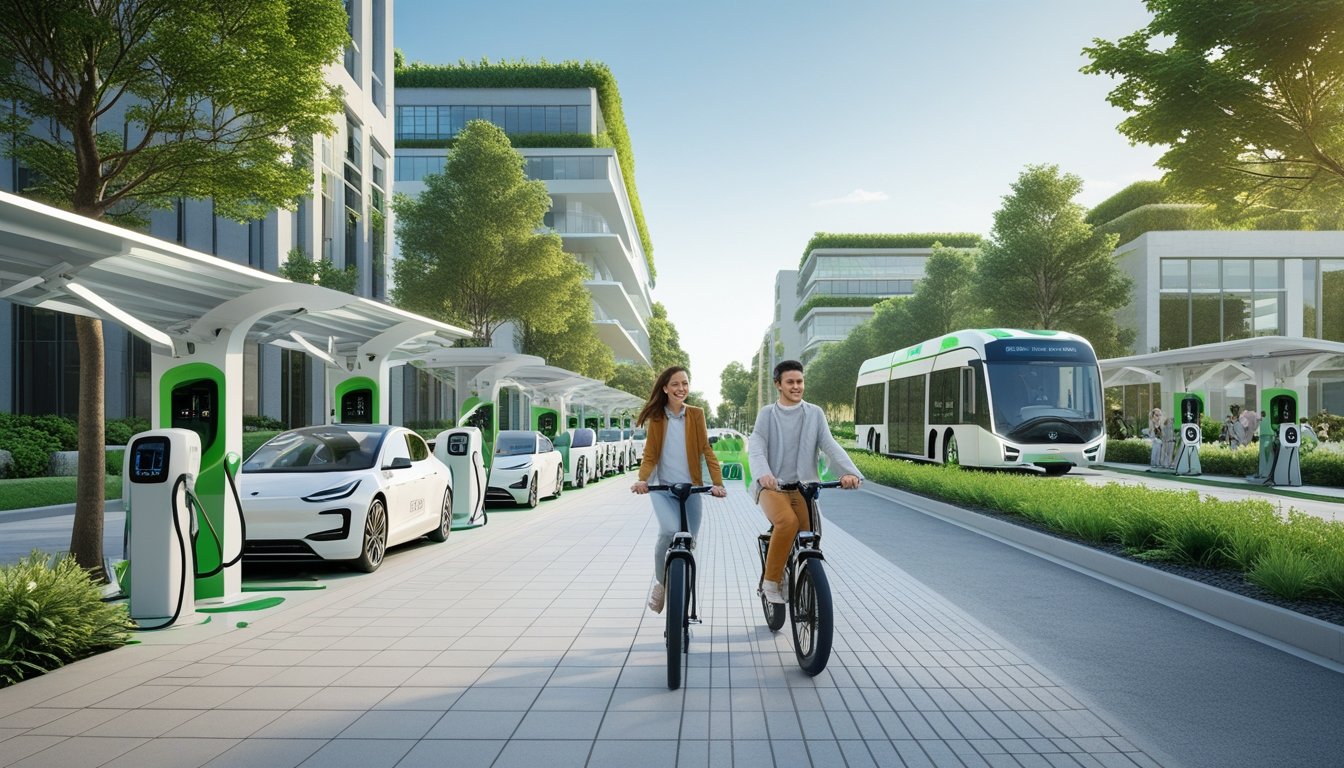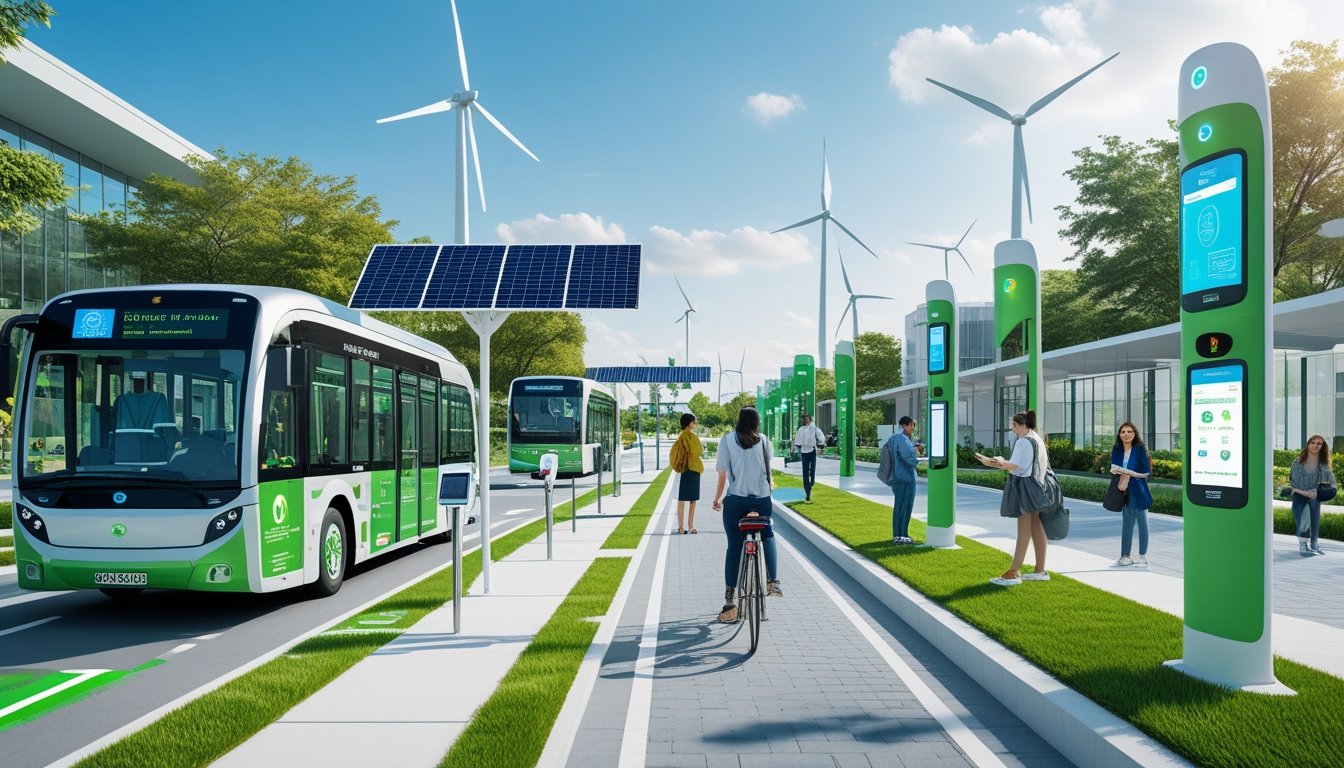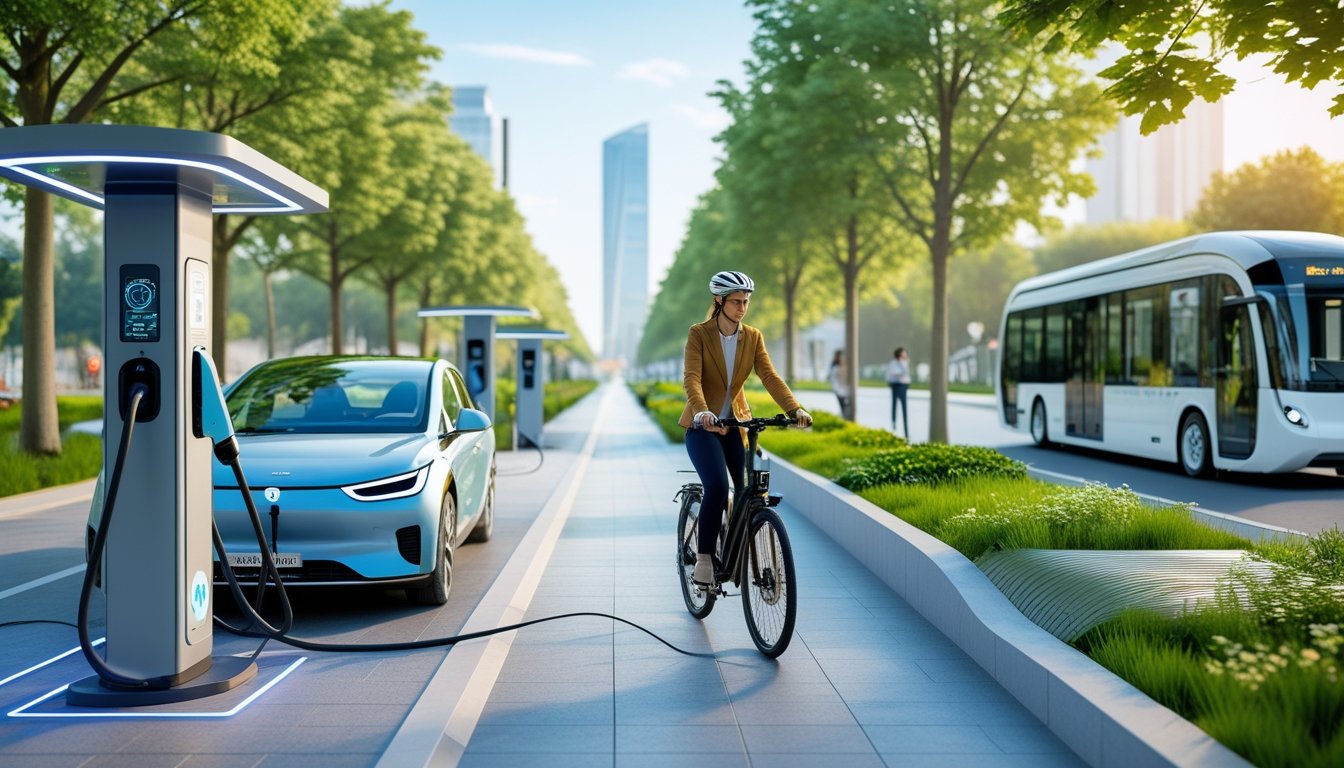Late updated: 01 Sep 2025 15:09
Written by: Sarah Hollister
Innovative Eco-Friendly Transportation Solutions: Transforming Urban Mobility
The future of transportation is undergoing a radical transformation as we strive to embrace eco-friendly solutions. Innovative transport technologies are reshaping urban mobility and long-distance travel, focusing on sustainable and user-friendly options. From electric bikes and scooters to advancements in public transit systems, these changes are paving the way for a cleaner and more efficient future.

As our cities grow and the demand for greener transport solutions increases, it's imperative to explore how these innovations can reduce our carbon footprints. The emergence of electric vehicles, smart mobility technologies, and community initiatives are not just trends but essential components of a sustainable lifestyle. Through these breakthroughs, we're not only improving our transportation networks but also making significant strides towards environmental preservation.
We’re witnessing an exciting time for transportation, where new ideas and technologies are constantly pushing the boundaries. As we dig deeper into these eco-friendly advancements, we’ll uncover the potential benefits they offer, not just to our cities, but to our lifestyles and future generations.
Key Takeaways
- Eco-friendly transport is revolutionising urban and long-distance travel.
- Innovations like electric vehicles and smart mobility are crucial for sustainability.
- These solutions contribute significantly to reducing environmental impact.
Key Innovations in Eco-Friendly Transportation
In our quest for sustainable mobility, three vital innovations are reshaping how we move: electric vehicles, hydrogen-based transport solutions, and micro-mobility options like bike-sharing. Each plays a crucial role in reducing the carbon footprint and promoting environmentally friendly alternatives.
Electric Vehicles and Battery Advancements
Electric vehicles (EVs) have become a cornerstone of modern sustainable transport. These vehicles offer a zero-emission alternative to traditional combustion engines, significantly reducing carbon emissions. Recent advancements in battery technology have improved the range and efficiency of EVs, making them more practical for everyday use. Innovations in lithium-ion batteries, including faster charging times and increased longevity, are key breakthroughs.
Additionally, the development of solid-state batteries promises further improvements. These batteries could enhance energy density and safety, accelerating the adoption of EVs. The broader availability of charging infrastructure is another critical factor supporting the transition to electric mobility. Public and private sectors are investing in expanding this network, making EV ownership more convenient and accessible for us all.
Hydrogen-Powered and Sustainable Fuel Transport
Hydrogen fuel cells offer a promising solution for emission-free transportation. Hydrogen-powered vehicles produce only water vapour as a by-product, making them an attractive option for reducing greenhouse gases. Significant strides have been made in producing green hydrogen, which is created using renewable energy sources. This advancement ensures that hydrogen-powered transport truly minimises its environmental impact.
Sustainable fuels, such as biofuels, are also gaining traction as alternatives to fossil fuels. These fuels are typically derived from natural resources, such as plants or waste materials. They offer a lower carbon footprint compared to traditional gasoline or diesel. The integration of sustainable fuels into existing transport systems provides an opportunity to reduce emissions without requiring comprehensive infrastructure changes.
Micro-Mobility Solutions and Bike-Sharing Platforms
Micro-mobility solutions, including e-scooters and e-bikes, are transforming urban transport landscapes. These options provide convenient, low-emission alternatives for short-distance travel, effectively reducing traffic congestion and pollution in city centres. Such flexibility is particularly appealing for densely populated areas.
Bike-sharing programmes have surged in popularity, bolstered by innovative technology and user-friendly platforms. These programmes help lessen reliance on private car ownership, contributing to lower carbon emissions. Mobile apps provide real-time availability and easy access, making bike-sharing convenient and efficient. As cities invest in cycling infrastructure, these solutions will likely continue to flourish, promoting healthier and greener urban living.
Technological and Infrastructure Solutions for Sustainable Transport

Our exploration of sustainable transport technologies reveals several promising solutions. From enhancing rail and water transport systems to implementing intelligent traffic management, each innovation offers unique benefits. These approaches focus on reducing environmental impact, promoting energy efficiency, and advancing low-emission logistics.
Advanced Rail and Water Transport Systems
Rail networks continue to evolve with high-speed trains and electrification, reducing greenhouse gas emissions significantly. High-speed rail offers a competitive edge for medium-distance travel by shortening journey times and drawing people away from air and car travel, which are less environmentally friendly.
Water transport is also undergoing a transformation. Hybrid and electric ferries are gaining traction, utilising renewable energy to power journeys. By improving efficiency and integrating innovative technology, these vessels lessen the environmental impact, catering to our commitment to reducing emissions.
Intelligent Transport Systems and Traffic Management
Intelligent Transport Systems (ITS) integrate communication technologies into transport infrastructure, optimising traffic management. By collecting and analysing data from roads and vehicles, ITS can mitigate congestion, enhance safety, and decrease emissions. Traffic management technologies, such as smart signals and adaptive control systems, allow for more efficient use of road networks, contributing to reduced air pollution.
The application of sensors and real-time data plays a crucial role. It allows monitoring of road conditions and traffic flow, enabling timely interventions. This helps in minimizing travel time and supporting public transit initiatives, fostering an environment conducive to sustainable urban transport.
Optimised Logistics and Low-Emission Freight
Logistics optimisation forms the backbone of low-emission freight transport. By employing route planning software and telematics, we can cut down on unnecessary mileage and fuel consumption. When combined with low-emission vehicles like electric or alternative fuel lorries, the reduction in greenhouse gas output is substantial.
Shared logistics platforms also contribute to efficiency. These systems encourage freight consolidation, maximising load capacity and decreasing the number of vehicles needed on the roads. Such measures are central to our strategy for achieving a sustainable and energy-efficient transport landscape.
Frequently Asked Questions

Eco-friendly transportation solutions present a range of benefits and practical uses while mitigating harm to the environment. By focusing on actionable strategies, we can minimise our impact on the planet and promote sustainable urban mobility.
What are the primary advantages of adopting eco-friendly transportation methods?
The primary benefits include a significant reduction in greenhouse gas emissions, improved air quality, and decreased traffic congestion. These methods often lead to healthier communities due to less pollution and noise. Additionally, many eco-friendly options are cost-effective in the long term, offering substantial savings on fuel and maintenance.
Can you provide examples of sustainable transportation that are currently in use?
Examples of sustainable transportation in use today include electric vehicles, public buses powered by biofuels, cycling networks in urban areas, and pedestrian-friendly city designs. Ride-sharing platforms also contribute by reducing the number of vehicles on the road.
How do green transportation solutions mitigate environmental impact?
Green transportation solutions help mitigate environmental impact by reducing reliance on fossil fuels and lowering carbon emissions. Using renewable energy sources like electricity from solar or wind power further alleviates our environmental footprint. Enhancing public transit infrastructure reduces individual car usage, contributing to ecological conservation.
What are some effective approaches to promoting eco-friendly transport within urban areas?
To promote eco-friendly transport in urban areas, we need to invest in infrastructure that supports biking and walking. Expanding public transport networks and integrating them with existing systems can increase accessibility. Incentives such as tax breaks for electric vehicle purchases or sustainable commuting can encourage adoption.
In what ways does sustainable transportation contribute to environmental preservation?
Sustainable transportation helps to preserve the environment by reducing pollution and conserving natural resources. By opting for cleaner transport methods, we contribute to the protection of ecosystems. These methods support biodiversity by minimising habitat disruption caused by traditional fuel-based vehicles.
Which modes of transport are considered the least harmful to the environment?
Walking and cycling are among the least harmful modes since they emit no pollutants. Electric buses and trains, especially those powered by renewable energy, also have a low environmental impact. Carpooling and ride-sharing reduce the number of vehicles in use, making them more sustainable than driving alone.
